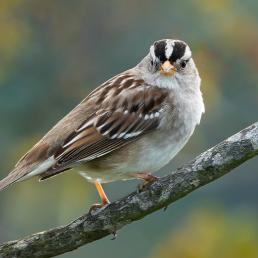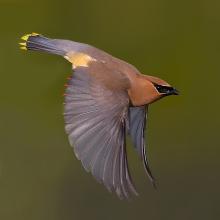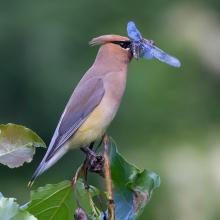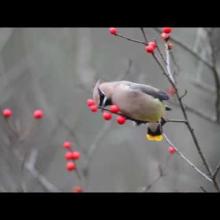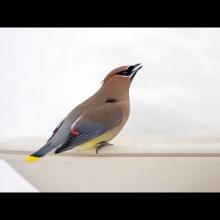

Join BirdNote tomorrow, November 30th!
Illustrator David Sibley and actor H. Jon Benjamin will face off in the bird illustration battle of the century during BirdNote's Year-end Celebration and Auction!
Autumn ... Feels like a new year.
We all remember the feeling of starting back to school at the end of summer. A serious change of scenes and seasons. And there's a lot to be done for the birds, too. With winter coming on, think of what you can do to help...
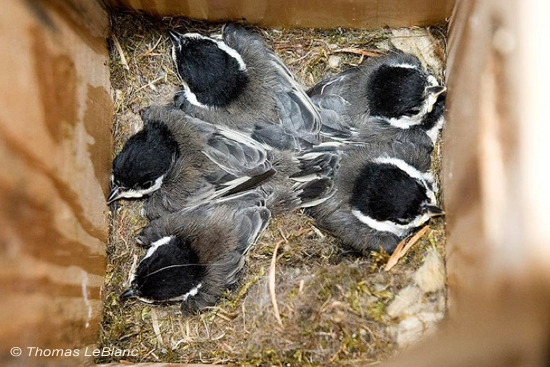
1. Clean out your nestboxes.
It's a good idea to wear gloves and a dust mask while you do this. Use hot soapy water and a scrub brush, and rinse it with a pot of boiling water for good measure, to get rid of pests. (Please no pesticides or bleach. If you feel bleach is necessary, use no more than one part bleach to nine parts water and rinse thoroughly.) Can you imagine the mess this little chickadee family made before they fledged?
After the box is fully dry, tuck it into the garage or shed to protect it from weathering. Or you could put it back out for small birds to roost in during the winter.
Did you remember to take notes about what birds nested in the box, how many times, and whether they were successful? You've probably been taking notes about your garden all summer long. Now's a good time of year to catch up your bird journal. Check out the handiwork of naturalist Heather Murphy for inspiration.
And next year, you could sign up for Cornell's NestWatch. A great citizen-science project.
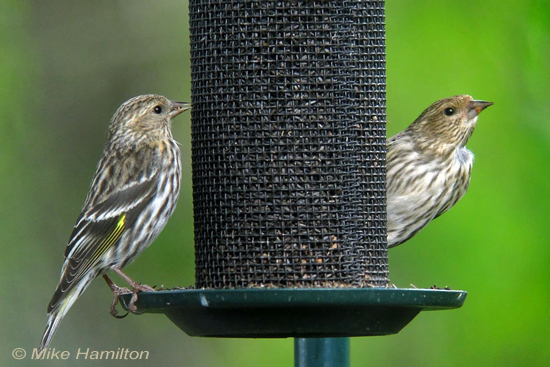
2. Clean up the birdfeeders for winter use.
Snow may not be expected for awhile, but you want to be ready when it happens. As with the nestbox, a scrub brush and some mild soapy water will do wonders. (Elbow grease is often the very best cleaner, isn’t it?!) Rinse everything thoroughly. Pine Siskins are on their way!
And put a note on your calendar to sign up for Cornell's Project FeederWatch, which begins in early November and runs through mid-April.
Will this be the year to spring for a birdbath heater? It'll keep your feathered friends happy and hydrated on a cold winter’s day and save you some trips in and out. Birds need clean water throughout the year, for bathing and for drinking.
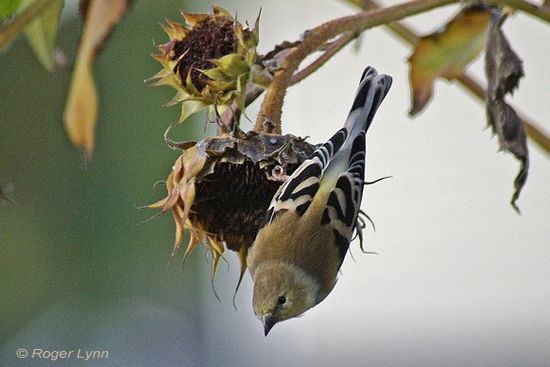
3. Don't cut it all down!
Leave a few seed heads on some flowers and plants in your garden, and you'll feed finches and other small birds far into the autumn. Does it seem that your bright little American Goldfinches have disappeared for the winter? They may still be out there, in their drab winter plumage.
4. Don't rake it all up - Leave some leaves!
Leave some leaf litter on your garden beds. This natural mulch will decompose and at the same time, offer great scuffling opportunities for ground-feeders.
If you have the time, space, and inclination, you could create a brush pile for the wild critters that share your outdoor space. Song Sparrows and towhees will love you for it! The Connecticut Department of Energy and Environmental Protection says, Few wildlife management practices can provide a more important part of wildlife habitat for the amount of effort than brush piles.
Have you lost a tree? Rather than cutting it down, consider creating a snag for wildlife. Russell Link, author of Landscaping for Wildlife, says, When people ask me what are my top ten plants, I oftentimes will include dead or dying trees … because they’re so important to a wide variety of birds. Woodpeckers, especially!
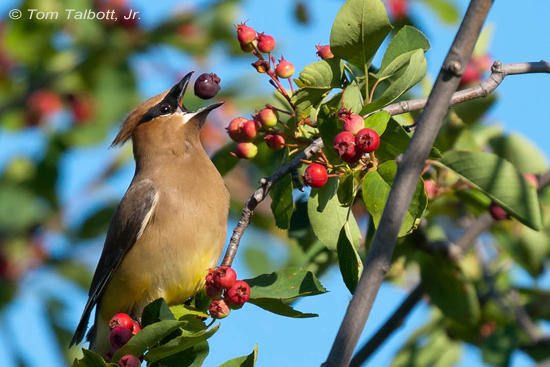
5. Start planning next year's garden.
As always, consider the birds. If something worked particularly well as an attractant this year, maybe you can plant more. Cedar Waxwings favor cedar berries, mountain ash, toyon, mistletoe, madrone, juniper, crabapple, hawthorn, firethorn, cherries, serviceberries, strawberries, and mulberries. (Audubon's Plants for Birds can help you choose the perfect native plants for your area.)
And don't forget the hummingbirds! You can attract these feathered gems to your yard or balcony by growing native plants with flowers of red, orange, or purple. Native plants offer nectar in spring and summer (and some even in fall and winter). They also attract insects – the most important part of a hummingbird’s diet. And native plants provide cover and a natural, sustainable habitat that welcomes birds to your yard.
And what about you?
With the garden put to bed, the kids back in school, and summer activities but a lovely memory, it's a good time for you to learn something new, too. This is the time of year when most Audubon chapters gear up with classes and field trips. Find your local Audubon and see what they have to offer.
###
Adapted from a column that originally appeared on AWayToGarden.com.
Thanks to photographers Thomas LeBlanc, Roger Lynn, Mike Hamilton, and Tom Talbott, Jr., for sharing their photos.
Sign up for Cornell Lab's NestWatch.
Learn more about gardening for birds at Audubon.org
Dead trees - or "snags" - attract wildlife! And more at NWF.org.
Here's more about Project FeederWatch.
Check out these BirdNote stories about gardening for birds!
Interview with Russell Link on Gardening for Wildlife
Native Plants Attract Native Birds
Bird-friendly Planting in the Fall
